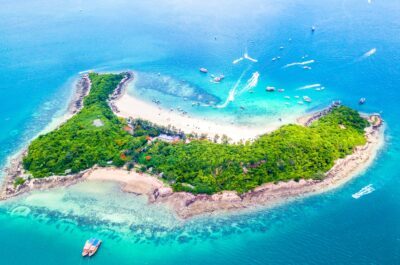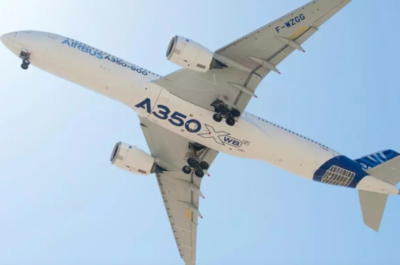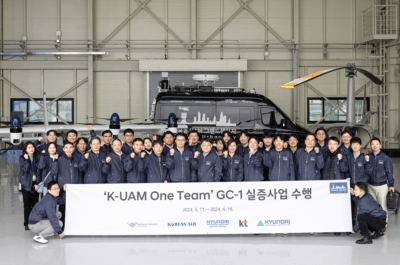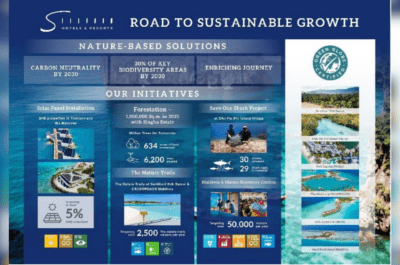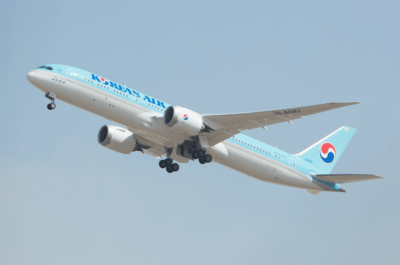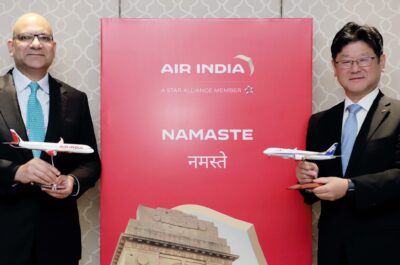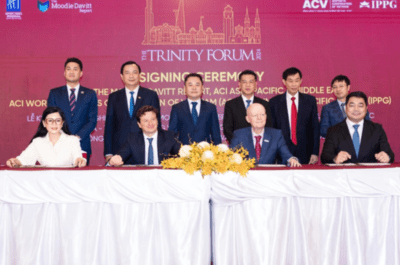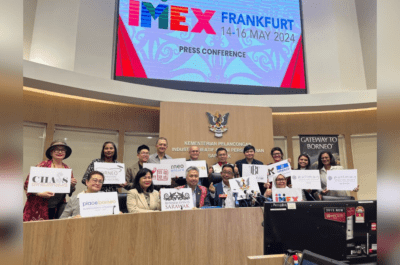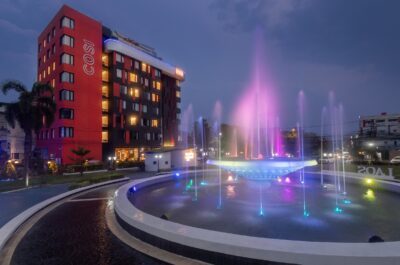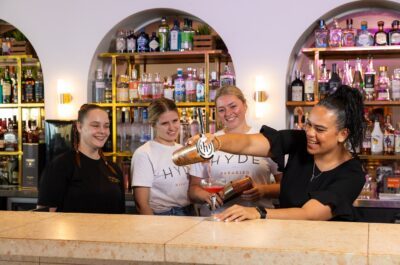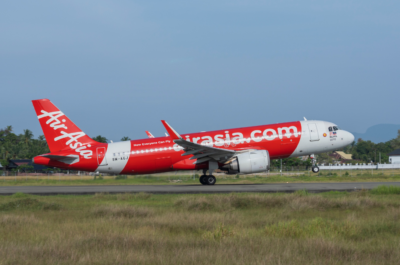…
Travel Daily News: China will soon occupy a ‘top 10` position among generating markets, according to the World Tourism Organization. What does this mean for your area in general?
Peter de Jong: It is a fantastic prospect for anyone established or currently planning to establish contacts and business in China (PRC). For Asia Pacific as a whole it is a strong plus-factor for the long term. The reduced reliance on long-haul source markets, such as Europe and North America, and the increasing dominance of arrivals from markets within the region has been an important trend in the region for the last decade. China is a massive market right on our doorstep. This has to be positive, especially if tourism development is managed sustainably.
TDN: China will also host next ‘Olympic Games` of 2008 at Beijing. Have you estimate the possible benefits for the area`s tourism industry?
PdeJ: PATA has not yet forecast the impact of the 2008 Olympics as such. However, we certainly note that the Sydney 2000 Olympics coincided with the best ever year for international visitor arrivals to Asia Pacific. (2004 is set to eclipse that record)
Table: International Visitor Arrivals to Australia, by Month 2000 & 1999
|
|
Year |
|
|
|
Month |
1999 |
2000 |
% Change |
|
January |
350,977 |
360,802 |
2.8 |
|
February |
398,567 |
434,595 |
9.0 |
|
March |
389,020 |
411,863 |
5.9 |
|
April |
334,135 |
405,615 |
21.4 |
|
May |
298,133 |
319,347 |
7.1 |
|
June |
317,055 |
347,943 |
9.7 |
|
July |
388,456 |
429,031 |
10.4 |
|
August |
355,609 |
372,850 |
4.8 |
|
September |
353,130 |
402,968 |
14.1 |
|
October |
396,979 |
426,512 |
7.4 |
|
November |
416,671 |
459,908 |
10.4 |
|
December |
460,775 |
559,935 |
21.5 |
TDN: Does PATA plan to run a specific business plan in order to maximise benefits of the “China`s Olympic Games Effect”?
PdeJ: There will be increasing publicity and awareness about China (PRC) in the run up to 2008. PATA will offer whatever support it can to its members as we approach the Games. The Chinese authorities already have detailed marketing and promotional plans to maximise awareness of China as a destination as we get closer to the Olympic Games. China will have observed the triumph of the Games in Sydney and Athens and will try to outshine these two outstanding successes.
TDN: Australia became a top meeting destination after it`s Olympic Games of Sydney. How does this affect the meeting and convention sector of the whole area of Asia and Pacific ?
PdeJ: The meeting sector is high yield and quality conscious. When professional convention organisers and planners see the new hotels, airports, infrastructure and streamlined processing for visitors being prepared it will boost their overall confidence and willingness to take meetings groups to China.
TDN: Press reports say that Asia/Pacific outbound travel is on the rise. Will this increase have any great bearing on travel to Europe, and particularly the Mediterranean area, or will it be mostly short-haul travel?
PdeJ: We predict that outbound travel to neighbouring countries within Asia Pacific will grow faster than longhaul, in part due to short-haul low cost carriers starting up in Asia. However, low-cost airlines that introduce longhaul routes will also drive new traffic to Europe, including the Mediterranean. London, Paris the Alps have long been favourites of Asia Pacific tourists. We can now expect southern Europe to benefit from the next wave of visitors from Asia Pacific.
With China (PRC) giving many EU countries Approved Destination Status (ADS) you can expect significant increases from that source market to Europe. We note already the strong increase in international air-seat capacity between Europe and China (PRC).
In addition, the China (PRC) outbound flows are gaining in strength. The China National Tourism Administration (CNTA) for example tells us that in the first seven months of 2004, outbound travel from China (PRC) surged by close to 64% to reach almost 16 million. On the strength of that we expect the total outbound figure to exceed the 30 million mark by year`s end.
TDN: In occasion of the Olympic Games of Athens, Greece had the opportunity to promote heavily itself as a top travel destination. Will this increase outbound tourism from your area to Greece?
PdeJ: Greece is a wonderful country with unique natural, historic and cultural monuments and attractions. I`m sure that if Greece`s tourism authorities actively target many of the varied niche markets of Asia Pacific, Greece would see a sharp upturn in arrivals from Asia Pacific.
In fact, we have recently encouraged the Greek tourism authority to join PATA as an ‘Allied Partner`. Now that Asia Pacific has become such a strong outbound source market for Europe, we invite European national tourism organisations enter a ‘strategic partnership` with PATA.
This gives them privileged access to market data, intelligence, analysis and forecasts, in order to help their strategic decision-making. We also introduce our Allied Partners to the industry leaders of their main, or future, source markets, so they can efficiently network and build relationships.
We very much hope that the Greek tourism authority will accept our invitation.
TDN: Reports say that international travel to Asia/Pacific has increased three-fold in the last decade from 25 million visitors a year to over 90 million. Will the area be able to sustain such growth? Can the area handle a further significant increase in arrivals?
PdeJ: With massive outbound markets largely untapped in China (PRC) and India, as well as the burgeoning middle classes throughout Asia, this rate of growth will only continue.
That`s why PATA not only advocates, acknowledges and awards best-practise sustainable development and tourism projects, but also jointly endorses the Code for Sustainable Tourism with the Asia Pacific Economic Co-operation forum and continues to provide significant support to the PATA Foundation.
Yet it is not only outbound potential that remains largely untapped; there are many inbound tourism development opportunities within Asia Pacific.
TDN: Would you give us a profile of International visitors choosing Asia/Pacific area for a trip?
PdeJ: People travel to and within Asia Pacific for any number of reasons. The region appeals to anyone who has a sense of adventure, an entrepreneurial spirit, an open mind, a taste for the exotic, an interest in history and culture, or is simply conscious of his budget and looking for fun and relaxation. Asia Pacific is a region so vast and varied that one could spend a lifetime exploring it.
TDN: On a general note, what type of tourism do you expect to see coming into the area for the near future? Does your association have any plans to vary its tourism product?
PdeJ: We expect tourism of all kinds. Our members` products are many and varied and we`re signing up different types of organisations from various parts of the world all the time. There will be more specialisation in various types of tourism: golf, spa, culinary, health, medical tourism, scuba diving and so on. Repeat visitors will visit new parts of countries they haven`t visited before.
TDN: Which are the major ‘locomotive` destinations of the area`s travel industry and which are the “key” sectors of tourism?
PdeJ:It all depends on the variable you use to define travel activity. If based on volume then the top 5 destinations in 2003 were (in order of highest volume):
- China (PRC)
- USA
- Mexico
- Canada
- Hong Kong SAR
The association also moved its European office from Monaco to Frankfurt, Germany. Was this simply a move to find a more central location for European operations or were there other reasons for the move?
It was a logical move to become closer to the economic, social and demographic heartland of Europe, which has moved eastwards in the last few years. Frankfurt is a major international aviation gateway centrally placed for easy access to many strategic points within and beyond Europe, while Germany is Europe`s strongest outbound travel market.
TDN: In the same vein, what do you expect from the new chapter being set up here by Jimmy Sofios of Interdynamic? How much and what type of business do your members get from our general area at the moment?
PdeJ: Jimmy was amongst the first to recognise the vast potential of our region for Interdynamic, for Crete and for Greece as a whole. He is an entrepreneur and a visionary. Clearly, he understands that the 21 st century is ‘the Asian Century`. Jimmy believes that, by building new business relationships in Asia Pacific today, he secures the prosperity of his company for tomorrow.
The wonderful thing about the Sofios family is that they are so eager to share : they would love for many more Greek companies and tourist authorities to join in the development of a pro-active relationship with Asia Pacific. And that`s why Jimmy Sofios joined PATA and has agreed to be our spokesperson in your country.
Actually, arrivals from Greece have been on the decline for the last 5 years:
- 132,433
- 130,718
- 109,638
- 108,554
- 92,073
Therefore, any activity that generates interest in travel between Greece and the Asia Pacific region – in both directions – will be particularly useful and we would look to the new Chapter to be involved in such activities.
TDN: Do you examine the possibility of organising the PATA Conference in Greece?
PdeJ: Each year, PATA Europe organises a European Chapter Conference. This year, Jimmy Sofios and his team have offered to host the Conference on the island of Crete. It is scheduled to take place from 10 to 12 June, 2005, and should be a wonderful event for many European PATA members to visit Greece and discuss their common interest in a strong professional working relationship, for two-way traffic, between Europe and Asia Pacific. In fact, one of the conference themes is : ‘Asia Pacific: Europe`s emerging source market`.
I look forward to attending this event myself ; it has been too long since I was last in Greece and it will be my very first visit to Crete.
TDN: Would you give us a short breakdown of what you expect from the PATA Travel Mart of this year in Thailand?
PdeJ: We had a very, very strong Mart with numerous buyers and sellers delighted with the variety of products and the quality of buyers. PATA Travel Mart 2004 attracted a total of 345 global buyers representing 309 organisations from 45 countries. They met with 720 seller delegates representing 342 travel and tourism organisations from 37 countries. Many of the attendees said they would attend PATA Travel Mart 2005 in Kuala Lumpur, September 27-30 next year.
Consumer demand is driving the travel industry, particularly pent-up demand carried over from the SARS downturn of last year. Strong economic performances in the region, the liberalisation of aviation and new low-cost carriers are also factors. These factors and the strong support from the Tourism Authority of Thailand also contributed to the success of this year`s Mart.
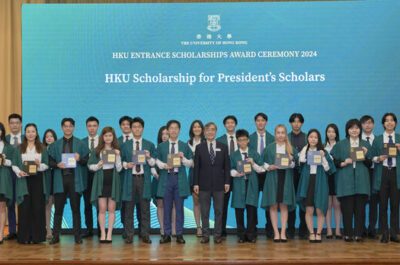



![[PR] PR_Ascott and Vimut Hospital_2024](https://www.traveldailynews.asia/wp-content/uploads/2024/04/PR-PR_Ascott-and-Vimut-Hospital_2024-400x265.jpg)

